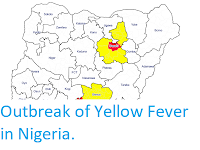The West African nation of Burkino Faso has been hit by an outbreak of febrile jaundice (fever combined with yellowing of the skin), with 442 cases and sixteen deaths reported between 8 September and 25 November 2020, the majority of the cases (387) in the Barsalogho Health District. Polymerase chain reaction tests carried out on samples taken from 10 of the patients have produced positive results for Hepatitis E, with none testing positive for any other causative agent for such fevers, such as Malaria, Leptospirosis or other forms of Hepatitis, nor have they tested positive for Covid 19, a disease which is currently running epidemic in Burkino Faso, with 2757 cases and 68 deaths reported so far this year. The majority of patients reporting symptoms (68%) are under 30, with an average age of 25, and 54% of the patients are female. Fifteen of the sixteen fatalities were women who were either pregnant or had recently given birth, which is typical of Hepatitis E, which is considered to be particularly dangerous to pregnant women.
Hepatitis E is caused by a single-stranded, nonenveloped, RNA Virus, and is usually a self-limiting infection, causing fever, nausea, loss of appetite, vomiting, jaundice, abdominal and joint pain and discolouration of the urine and stool, which typically passes within 2-6 weeks. However, in some cases the disease can cause acute liver failure (hepatitis) which is often fatal. Pregnant women are considered to be at particular risk from this disease, with a fatality rate of about 30%, compared to about 1% for the general population.
Hepatitis E is spread through faeces and contaminated water, and thrives in unsanitary and crowded conditions. This was become a problem in Burkina Faso since September 2017, when an armed conflict broke out in the country, which has displaced many people internally, with people moving away from their traditional farmlands into lager towns where they receive some protection from the nation's security services, but resulting in many people living in overcrowded conditions with poor sanitation.
See also...



Follow Sciency Thoughts on Facebook.
Follow Sciency Thoughts on Twitter.






